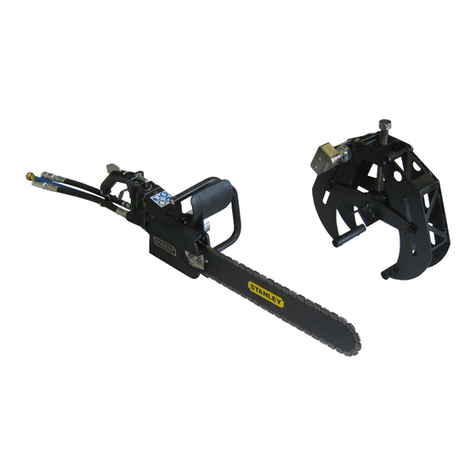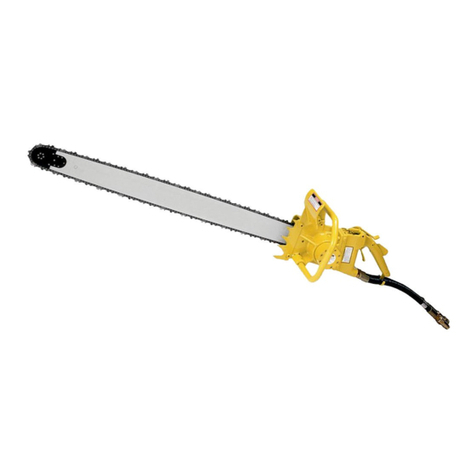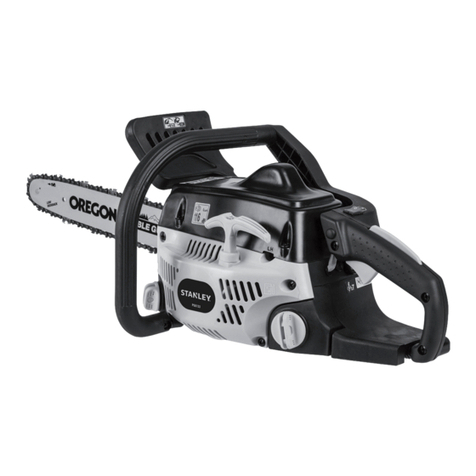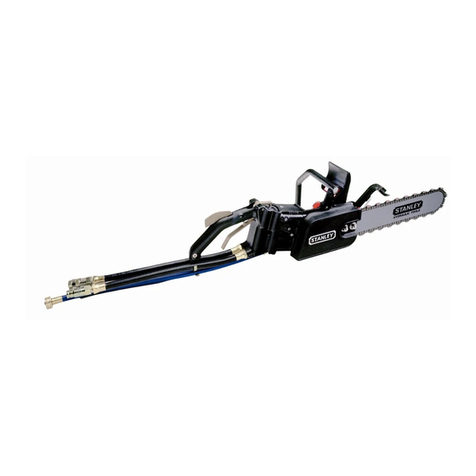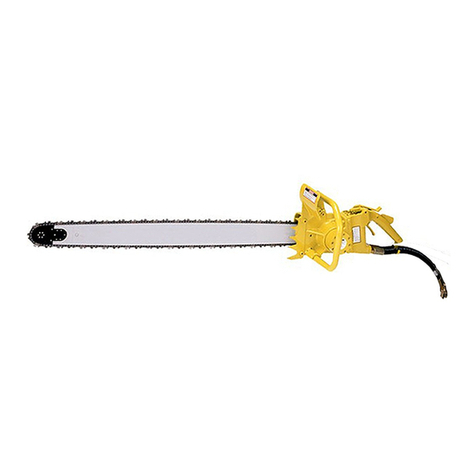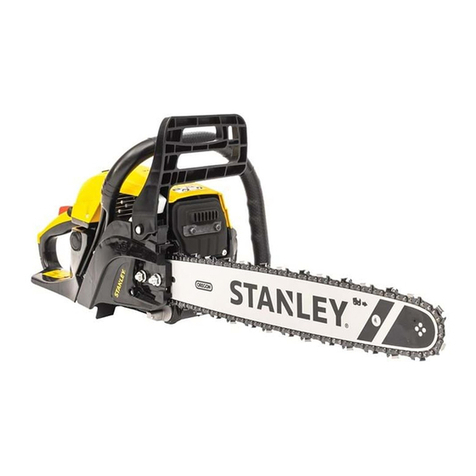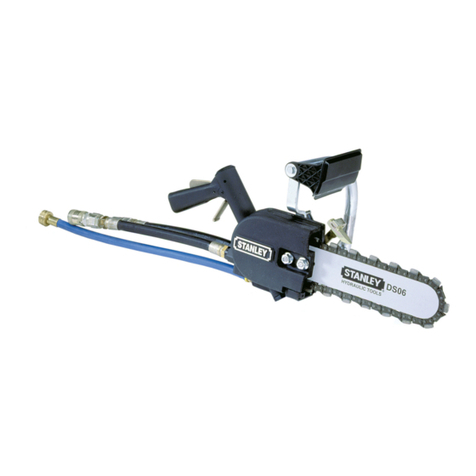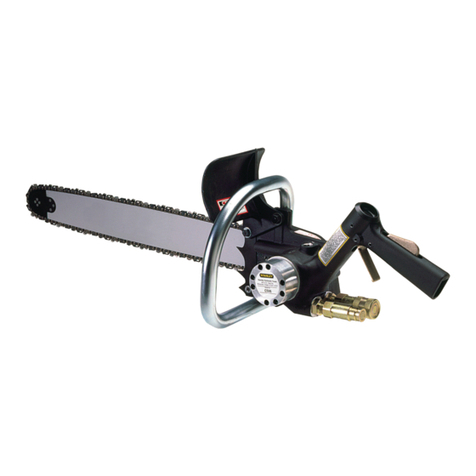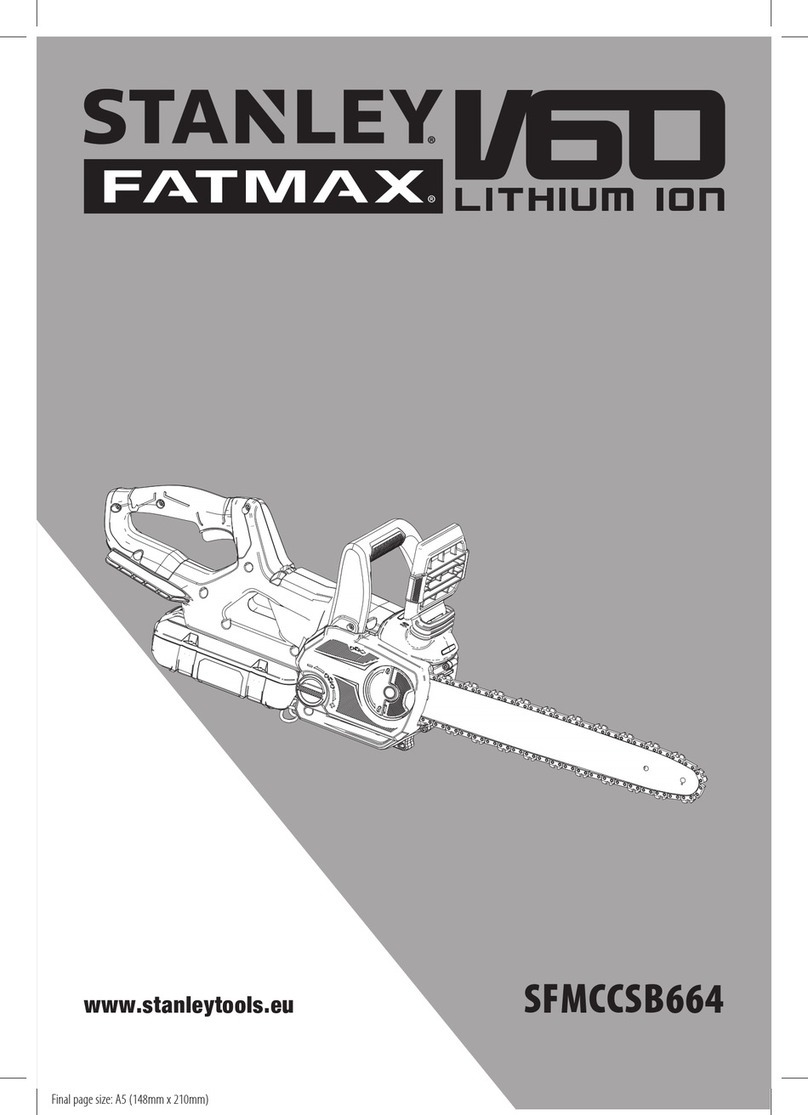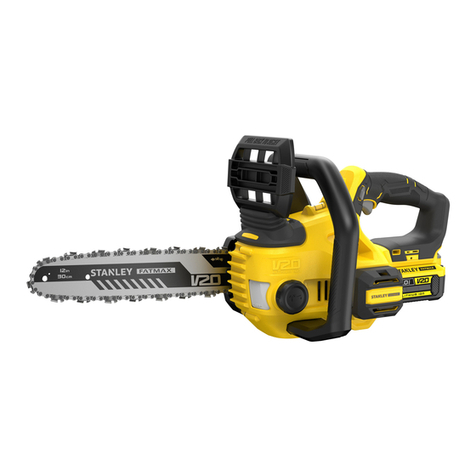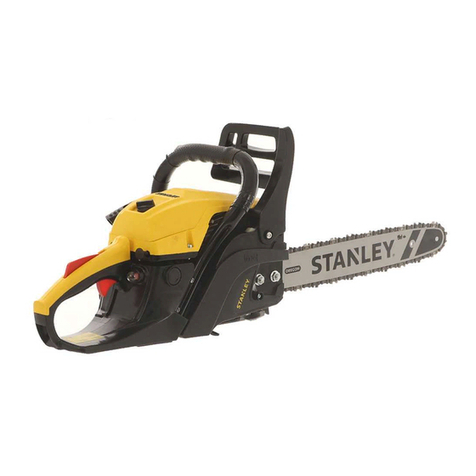
10
SPECIFIC SAFETY INSTRUCTIONS
WARNING: Do not use the chainsaw in areas where there
is a risk of explosion or fire from combustible materials.
The sparks possibly caused when using this chainsaw
may ignite combustible materials as well as flammable
liquids, paint, varnish, petrol, flammable gases and dust
of an explosive nature. As a precaution it is recommended
that you consult an expert on a suitable fire extinguisher
and its use. Ensure that the work area is kept clear of
combustible materials.
WARNING: Do not use the chainsaw indoors or in
confined spaces where exhaust gases, smoke or fumes
could reach dangerous concentrations.
• Always use the chainsaw in an open well
ventilated area.
• Ensure chainsaw is fully assembled before use.
• Unit will become hot during use. Please keep chainsaw at least
fifteen metre’s (15m) away from buildings, other equipment,
pedestrian areas or flammable materials.
• Never pull the re-coil starter once the chainsaw engine has
started. Any damage caused will not be covered by warranty.
• Ensure the chainsaw has stopped before servicing, or
lubricating etc.
• Do not attempt to modify the chainsaw, guards or the supplied
accessories in any way.
• Do not touch the exhaust. This can become very hot during
operation and can cause serious burns.
• Always check the chainsaw for damaged parts or fuel leaks,
ensure these are fixed before using it.
• Never refuel while smoking or in the vicinity of
an open flame.
• Always wear safety eye wear, ear and breathing protection
when operating or refuelling the chainsaw.
• To avoid a fire if you spill fuel while refuelling, clean up before
starting the chainsaw.
• Your chainsaw is factory set, NEVER attempt to speed it up as
this could endanger the user and damage the chainsaw.
• If the chainsaw makes an unfamiliar sound or vibrates
excessively, switch the chainsaw ‘OFF’ immediately. Investigate
the possible cause or consult your authorised service agent.
• If chain brake does not operate do not use the chainsaw and
have it serviced by your authorised service agent.
• Never use coolant in the chainsaw as damage may occur.
• Never transport the chainsaw with fuel in the tank. ALWAYS
empty the fuel tank.
• Do not tamper or alter any parts as this may cause personal
injury or damage the chainsaw.
• Never point chainsaw at people or animals.
• Never spray the chainsaw.
• Never operate the chainsaw without chain bar oil, any damage
caused will not be covered by warranty.
• Bystanders or people watching must be at least 15 metres away
from an operating chainsaw.
• Do not start or use the chainsaw near other people or animals.
• Do not use the chainsaw if you are tired or distracted or your
reactions are impaired due to the consumption of alcohol or
medication. Inattention can result in serious injuries.
• Do not wear loose-fitting clothing or jewellery. Wear long
trousers to protect your legs.
• Wear suitable, close-fitting work clothing.
• Keep your body parts and clothing away from the chainsaw
when you start the engine and whilst it is running.
• Ensure that you are standing on a firm, safe surface whilst
working. Do not walk backwards carrying the chainsaw. Do not
adopt unnatural postures.
• If you use the chainsaw for lengthy periods of time, you may
suffer circulation problems caused by vibrations (white finger
disease). It is not possible to provide precise details on the
duration of use in each case since it may differ from person
to person. The following factors may affect this phenomenon:
Circulation problems in the hands of the user, low outdoor
temperatures and lengthy periods of use. We therefore
recommend that you wear warm work gloves and take regular
breaks.
• The emissions from engines are toxic and may cause asphyxia.
Do not start the chainsaw in enclosed or poorly ventilated
areas.
• Ensure that the handles are clean, dry and free of the petrol
mixture.
• Do not use the chainsaw without the exhaust. You may suffer
burns as a result.
• Switch off the chainsaw before you put it down. Only work in
daylight or in good artificial light. Conduct a visual inspection of
the chainsaw before use.
• Check the chainsaw and its components and safety equipment
every time before use for signs of damage and wear and
have any repair work carried out without delay. Never render
protective and safety equipment non-functional. Do not use the
chainsaw if you discover signs of damage or wear.
• Keep the chainsaw out of the reach of children. Check the
chainsaw for signs of damage after any collisions or other types
of damage.
• Use only the accessories recommended by the manufacturer.
• Only have the chainsaw repaired by an authorised service agent
and using only genuine spare parts.
• Do not use the chainsaw near flammable liquids or gases or in
a wet or damp environment. If you ignore this, there is a risk of
fire or explosion.
• Never leave the chainsaw running unattended.
• Only work in suitable light conditions.
• Always wear Personal Protective Equipment (PPE) including
good quality non-slip shoes with safety toe tips.
• Never use chainsaw in thongs or barefoot.
• Do not use any ethanol fuel in this chainsaw.


